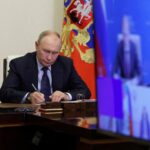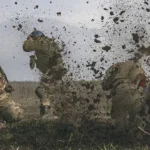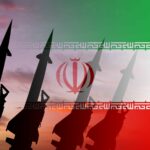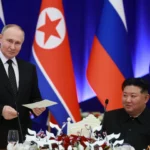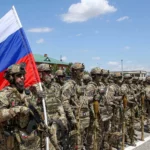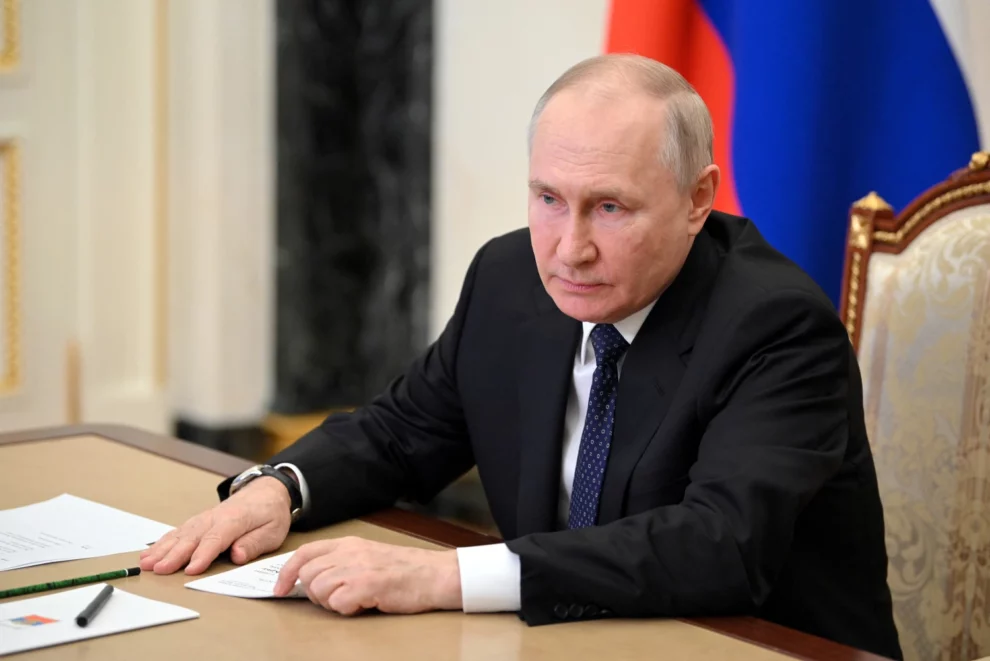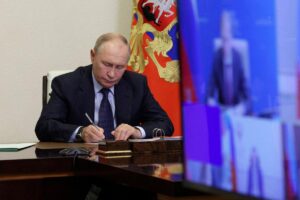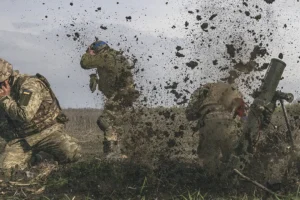The spectacle of Prigozhin’s rebellion – including the almost unopposed march of the Wagner group almost to Moscow – is a sign of the weakening of the Putin regime. It is time to redouble the pressure and hold Putin and his henchmen accountable for their aggression against Ukraine and attempts to undermine global democracy. Financial sanctions are an important part of this press in its entirety. With that in mind, we are pleased to publish the latest release of our Brookings sanctions tracker.. This update approaches 5,000 targeted financial sanctions lists in nine jurisdictions and includes the addition of nearly 2,000 entries. The sanctions target Putin, Russian government and military officials associated with him, and privileged oligarchs. Mapping the sanctions imposed reveals the scope of Putin’s network, as well as potential pressure points to oppose the regime.
The recent Wagner uprising showcases Russia’s complex political landscape and highlights the vulnerability of corrupt systems. Effective sanctions contribute to the global fight against corruption. The scale, depth and continuity of the sanctions imposed against Russian legal entities and individuals are impressive. However, as the examples below show, loopholes remain. More needs to be done to close loopholes and increase pressure on the Putin regime and those who evade sanctions. Brookings sanctions tracking allows you to track targeted financial actions against oligarchic networks in Russia and beyond. The tracker provides a critical view and understanding of both current progress and emerging gaps.
Notable progress has been made in expanding sanctions, including the latest round of U.S. sanctions announced yesterday that target Russia’s corruption accomplices. For example, after the release of our September analysis , almost all jurisdictions noted in the tracker took tangible measures against the legislative bodies of the Russian Federation, imposing sanctions on hundreds of members of the Federation Council and the State Duma. Many of these people played an important role in Putin’s kleptocratic network.
Several jurisdictions have recently underscored their commitment to prosecuting those who try to circumvent sanctions. The US (which has taken the lead in Russia-related sanctions) and the EU have recently announced further efforts to close sanctions loopholes . We welcome these efforts. Countering sanctions circumvention is an area that needs improvement across jurisdictions and globally, as issues like the golden visa system show .
The tracker also reveals relationships between individuals and entities under sanctions, as well as discrepancies between jurisdictions. The two networks fueling Russia’s war in Ukraine, the Wagner group and the Iranian unmanned aerial vehicle (UAV) supplier network, are examined in more detail below.
Wagner Group
PMC Wagner is subject to sanctions for human rights violations and transnational crimes around the world. His characteristic activity was reinforced by the conflict in Ukraine, in which Wagner “mercenaries” were deployed to fight for the Russian state. Our database tracks targeted financial sanctions against the Wagner Group and its mercenary network since December 2016. We have included data on multilateral sanctions against over 25 individuals and entities associated with the Wagner Group, identifying loopholes in various jurisdictions and exposing those responsible for human rights violations.
Nearly all jurisdictions we monitor have sanctioned Dmitry Valeryevich Utkin, founder of the Wagner Group, and some have sanctioned Task Force Rusich , a paramilitary organization allegedly operating as a division of the Wagner Group. In this update, the tracker shows a model of extensive third parties associated with and allegedly acting on behalf of Wagner, replicated in another area important to Russia’s war effort in Ukraine: Iranian UAV shipments.
Iranian UAVs
While Prigozin’s short-lived coup only lasted 36 hours , the cooperation fueling the dispatch of Iranian UAVs from Iran to Russia is getting stronger . Russia denies receiving and using Iranian drones, but contrary evidence shows that the invasion of Ukraine has opened a window of opportunity for Tehran. The Iranian UAV manufacturing network, from component production to deployment, is inextricably linked to companies and individuals linked to the Islamic Revolutionary Guard Corps Aerospace Force (IRGC), part of the Iranian military with ties to Russia.
The Shahed and Mohajer series UAVs deployed by the Russian military in Ukraine are manufactured through a number of illegal networks operating outside of Iran. Qods Aviation Industries (QAI) , known for its work with the IRGC, was organized under the Iranian Aviation Industries Organization (IAIO) , the organization responsible for managing Iran’s military aviation industry. QAI and other companies such as Paravar Pars are working together with Shahed Aviation Industries to ensure continuous production of UAVs under the leadership of the Iranian government.
Brookings Sanctions Tracker identifies the individuals leading each organization and provides a breakdown of the rationale for each sanction and the relationship between the individuals and entities involved. This allows you to track links in several ways. Using this feature, gaps can be seen between jurisdictions targeting individuals and entities involved in the supply and transfer of Iranian UAVs to Russia. Identifying and filling such gaps are important steps to undermine the Russian war machine’s supply line.
Putin’s corrupt network is spreading across sectors of the Russian economy and around the world. Multilateral sanctions targeting the political, economic and financial system of the Russian Federation could help counter this network, including global partners helping Putin’s war in Ukraine. Brookings Sanctions Tracking reveals the scope of these targeted financial sanctions and helps analysts identify gaps within and between jurisdictions’ lists of businesses and individuals.
Source: Brookings

